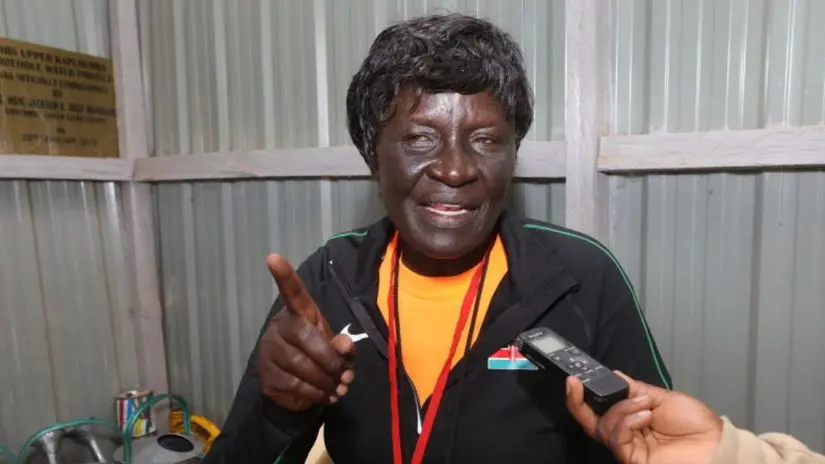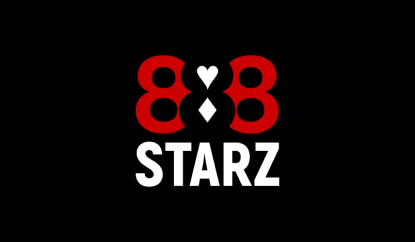In Eldoret, a race is unfolding that has nothing to do with lap splits or photo finishes. The Kipchoge Keino Stadium Court Case 2025 has vaulted from a local planning file to a national debate about heritage, public participation and the future of sport in Kenya. At its heart are athletes led by trailblazer Tecla Chemabwai Sang, the first Kenyan woman to participate in the Olympic Games, who are asking the High Court to stop the demolition of a field they consider sacred.
A stadium that shaped champions
Kipchoge Keino Stadium, formally known as Kapsabet Stadium, was established in the 1970s and upgraded in 2016 at a cost of Sh295.4 million. For decades it has hosted athletics meets, football fixtures and national celebrations, turning green turf and red track into a shared memory for the Nandi community and Kenyans far beyond Kapsabet.
To the petitioners, the ground is more than steel and concrete, it is a symbol of identity and aspiration. They describe it as a national sports monument and a cultural heritage site, a place where young runners find their stride and where the region’s sporting soul gathers under open skies.
What Nandi County wants to build
According to the Kapsabet Municipality Master Plan, the stadium land is earmarked for the expansion of the Central Business District. The plan proposes relocating the modern market to occupy 8.7 acres of the stadium grounds, while converting the current market area into a matatu and bus park.
Sporting activities would be shifted to the Eliud Kipchoge Sports Complex, a 25-acre site, with part of the nearby showground, approximately 16 acres, allocated for affordable housing. The Nandi County government has framed the redevelopment as a way to expand Kapsabet’s CBD, spur urban growth, create jobs and align with national development programs focused on housing and markets.
Why athletes ran to court
The petitioners argue that the plan is unlawful and dismissive of public sentiment. Through their lawyer, Kibe Mungai, they say residents overwhelmingly opposed the change of user during a December 2024 forum, and that a constitutional democracy requires authorities to heed such feedback.
“In a Constitutional democracy like Kenya, the respondents were required to abandon the plans to change the user of Kipchoge Stadium upon the residents expressing overwhelming disapproval of the same during the limited public participation exercise.”
Led by Tecla Chemabwai Sang, the group includes former athlete William Koskei, Sammy Kiplagat, Fredrick Kiptanui, Fatwel Kimaiyo, Wilson Cheseret, Vivian Biwott, Fred Kipkemboi, Paul Koriri, Catherine Kirui and John Yego among others. They have sued the Nandi County government, the County Assembly, the Cabinet Secretary for Lands and Housing, the National Land Commission and the Attorney-General.
The legal milestones so far
The case was filed at the High Court in Eldoret and certified urgent by Justice Patrick Otieno. The respondents have been directed to file responses to the suit, and the petitioners have applied for conservatory orders to halt any steps toward demolition while the case is heard and determined.
What unfolds next will hinge on filings from the respondents and the court’s assessment of the public interest, the legality of the change of user, and whether the immediate status quo should be preserved until a full hearing.
Heritage, youth and the economy
For the athletes, dismantling the stadium would be more than a lost landmark, they say it would undercut youth employment and the region’s sporting economy. Athletics has long been a livelihood in the North Rift, and the petitioners argue the state has a duty to support sports as a pathway for opportunity.
They also point to the 2016 refurbishment as a reason to pause. In their view, tearing down a recently upgraded public facility would amount to unadulterated wastage of public resources. As their lawyer submitted, there is “no lawful cause, reasonable grounds or justification for the planned demolition and relocation of Kipchoge Stadium to showground land.”
Land use and environmental concerns
Beyond sport, the petition highlights environmental and aesthetic considerations in Kapsabet. The stadium’s open space has served as a green lung, and the petitioners warn that replacing it with dense commercial and transport infrastructure would alter the town’s character.
“Given the fact that a stadium occupies a green space in a largely natural form, the environment and aesthetics of Kapsabet town will be adversely affected by the impugned change of use to pave way for affordable housing, expansion of a bus stage construction of a modern market and other socio-economic activities thereby endangering the environment.”
Competing visions of the public good
Two narratives are now in contention in Eldoret. On one side, the Nandi County government emphasizes urban growth, job creation and alignment with national priorities. On the other, athletes and residents say public participation was inadequate, the decision defies the community’s will and it risks erasing a cultural anchor.
The petitioners go further, alleging that the plan is actuated by ulterior motives. Court papers claim that the demolition is a guise for grabbing prime land within Kapsabet, and that shifting sport entirely to the sports complex and showground would fracture a tradition rooted in the stadium’s original site.
Inside the petitioners’ brief
Several assertions underpin the case. First is the argument that the County Assembly’s land, environment and natural resources committee approved the change of user in January 2025 despite public opposition during the prior forum. Second is the claim that stakeholders, including athletes and residents, did not consent to the demolition and relocation of this historic stadium.
“There is no lawful cause, reasonable grounds or justification for the planned demolition and relocation of Kipchoge Stadium to showground land. The Petitioners are convinced that the planned demolition of the stadium and relocation is actuated by ulterior motives namely the grabbing of prime land within Kapsabet town under the guise of construction of a modern market.”
Third, the petition contends that the decisions are discriminatory and deprive the athletic community and the Nandi people of equal protection under the law. This, they say, conflicts with the state’s duty to create and protect avenues for youth employment and development through sport.
| CASINO | BONUS | INFO | RATING | |
|---|---|---|---|---|
|
bonus
Deposit KES 147 for up to KES 14,745 bonus + spins!
See 10 Bonuses
|
info
BK 0000683 Industry-leading software providers, over 30 casino games, BCLB license |
|||
|
bonus
Register for up to 31,400 KSH bonus on deposits!
See 12 Bonuses
|
info
No. ALSI-112310012-F15 Unique selection of slots & games |
|||
|
bonus
New players get 50 free spins and a Ksh 2500 freebet!
See 7 Bonuses
|
info
BK 0000665 PG 0000405 Good combination of online casino and betting platform |
|||
|
bonus
Bonus on 1st deposit: Free Bet up to 10,000 KES
See 3 Bonuses
|
info
BCLB 0000794 Licensed betting platform with a variety of bonuses and high odds |
What the redevelopment would change on the ground
In practical terms, the plan would reorder Kapsabet’s core. The modern market would move to 8.7 acres of the current stadium land, the existing market would become a matatu and bus park, and part of the showground would transition to affordable housing, while competition and training would be concentrated at the Eliud Kipchoge Sports Complex.
Proponents of the plan argue that such consolidation can unlock economic activity and improve transport flow. Opponents respond that breaking the link between the stadium site and the town’s daily life would weaken a living heritage that has inspired generations of runners.
Key facts to remember
- The stadium was built in the 1970s and upgraded in 2016 at Sh295.4 million,
- Public participation in December 2024 reportedly produced overwhelming opposition to demolition according to the petitioners,
- The High Court in Eldoret has certified the matter urgent and directed the respondents to file responses.
The names on the petition
Beyond the headline name of Tecla Chemabwai Sang, the petition lists a cross section of retired and active athletes. Among those named are William Koskei, Sammy Kiplagat, Fredrick Kiptanui, Fatwel Kimaiyo, Wilson Cheseret, Vivian Biwott, Fred Kipkemboi, Paul Koriri, Catherine Kirui and John Yego, reflecting a community bound by the same track and the same cause.
Their case underscores a belief that facilities do not merely host sport, they shape it. In their view, location matters, history matters, and the identity that grows around a venue can be as valuable as any new brick-and-mortar project.
What happens next in Eldoret
With urgency certified, the court process moves to written responses and the consideration of interim relief. The petitioners have asked for conservatory orders that would pause any demolition or relocation steps until the court weighs the merits of their claims.
The county has previously defended the redevelopment as part of a coherent municipal and national strategy, though a formal reply to the suit remains pending. The judge’s next directions will determine whether the stadium’s future is frozen in place while arguments are heard or whether planning works can proceed.
Why this story resonates beyond Kapsabet
The fight over Kipchoge Keino Stadium taps into a wider Kenyan conversation about how to balance growth with memory. On one side is the drive to modernize towns, improve housing stock and expand markets, on the other is the duty to protect heritage, nurture sport and honor public participation outcomes.
For many, the outcome will signal how future battles over public spaces are resolved. Whether the case concludes with preservation, relocation or a compromise, it has already achieved one thing, it has reminded the country that stadiums can be more than venues, they can be vessels for community, history and hope.
The heart of the matter
From the courtroom in Eldoret to the stands in Kapsabet, the debate is ultimately about what kind of town, and what kind of sporting nation, Kenya wants to be. The petitioners believe the best version keeps the stadium where it stands, rooted in the stories of generations and ready to host the next wave of talent.
As filings land on the record and the legal arguments gather pace, the track that matters most is not 400 meters of tartan, it is the path a community chooses for its future. In that choice, the legacy of a stadium, and the promise it carries for the youth of the North Rift, hang in the balance.










